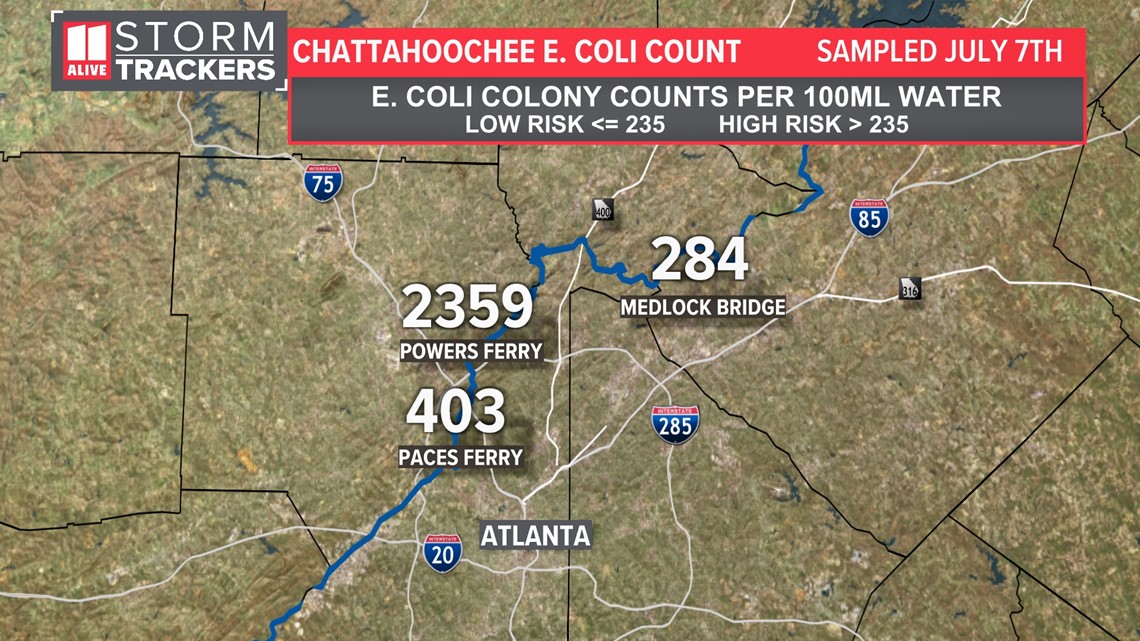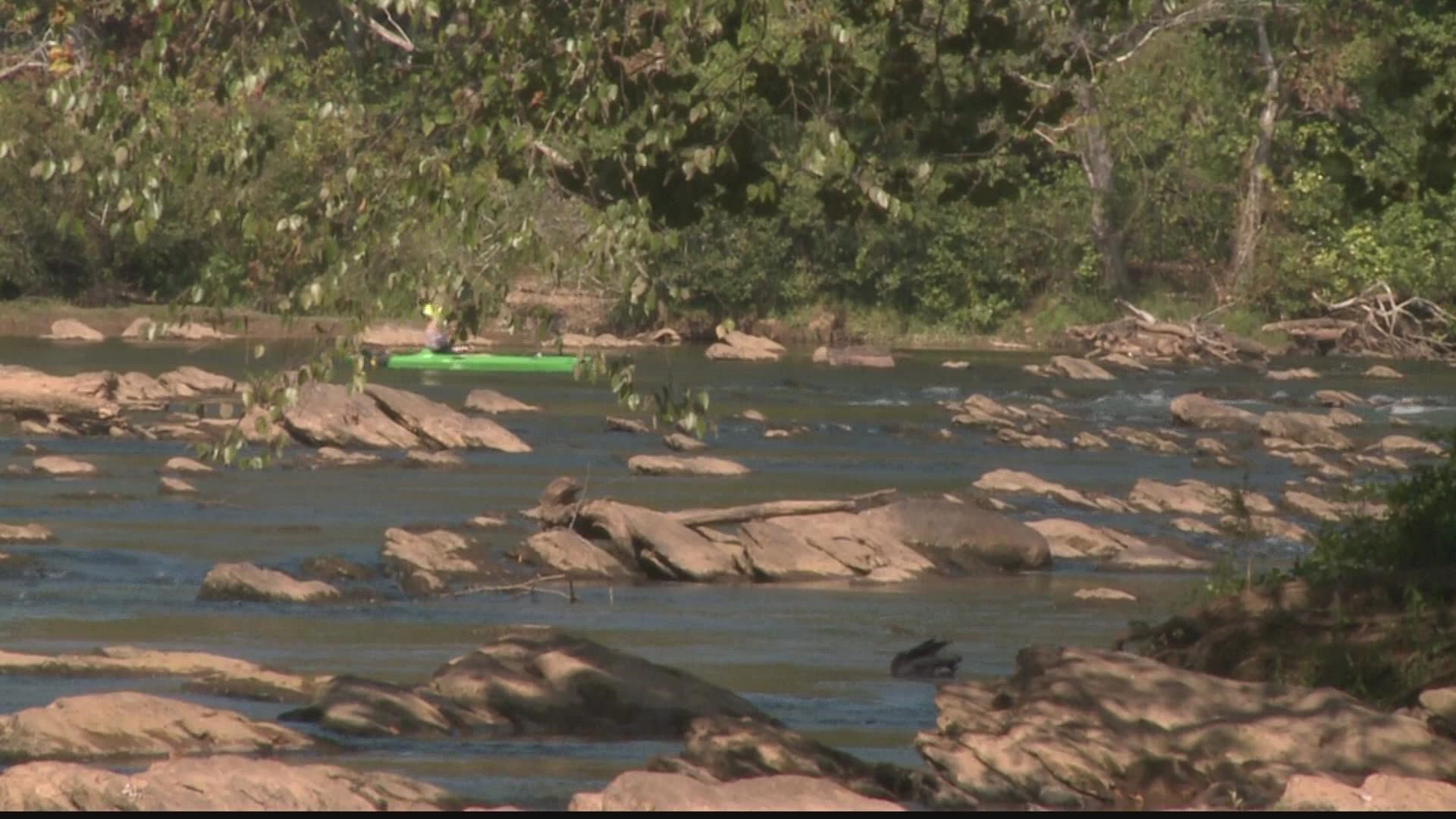FULTON COUNTY, Ga. — After this week's heavy rains from pop-up thunderstorms, E. coli levels have spiked in the Chattahoochee River well above the nation's Environmental Protection Agency's standard considered safe for swimming.
11 Alive spoke to Chattahoochee Riverkeeper Jason Ulseth, who said the look of the river is the first sign that contamination levels are running high.
"When the river looks like chocolate milk, that's when we highly recommend you stay out of the water," Ulseth said.
Ulseth, who has been with Chattahoochee Riverkeeper since 2007, says this level of E. coli count is very common in weather patterns like what North Georgia had over the last week.
"In the summer when we get in this pattern of daily pop-up thunderstorms with really heavy rain, there's a lot of stormwater runoff. The river gets contaminated with waste from dog parks, septic and sewer system," he explained.
He added that although this latest E. coli count is nowhere near the record levels from the 2009 Atlanta floods, it's definitely high enough to where one should avoid being in the waters of the Chattahoochee for the next couple of days until conditions improve.
The USGS, National Parks Service, and the Chattahoochee Riverkeeper collaborate weekly, collecting water samples from several sites along the river, south of the Buford Dam. They started collecting data back in 2000, and for the first few years were able to gather data 3 to 4 times a week.
The Beach Action Value (BAV) criteria is a fecal indicator marking, above which it's potentially unsafe for recreation like swimming and tubing. According to their website, "the BAV for E. coli concentrations in freshwater is 325 colony forming units per 100 mL of water." Anything above this is considered unsafe for the general population.
The E. coli colony counts measured Thursday, July 7 were 10 times higher than what's considered safe for swimming at Powers Ferry gaging station, located near the Interstate-North Parkway bridge.


When the area does not see heavy rain patterns, the water levels are usually well below the EPA's threshold, Ulseth added.
"This majority of the time, the Chattahoochee River water quality is really good. When the water looks clear, you can tell it's much more healthy and safe to swim in," he said.
After the first few years of measuring water quality and gathering E. coli levels on the Chattahoochee, a U.S. Geological Survey scientist was able to come up with a statistical model to predict current E. coli levels by the hour.
Christopher Smith, Norcross Field Office Chief, told 11 Alive that the E. coli is closely related to another water component. "We were able to draw a strong correlation between turbidity and bacteria levels at our USGS gage locations." Along with the turbidity (water cloudiness levels), predictions are also based on streamflow, the time of year, and other factors. It is very accurate. They have a 90 percent confidence in their model.
He added that when the Chattahoochee sees higher E. coli counts after heavy rains, it also means smaller waterways that flow into the Chattahoochee also have similar water quality conditions. "Often smaller tributaries coming into the Chattahoochee can be large players to the higher bacteria counts." They are all interconnected by something called a watershed, an area that channels rainfall and snowmelt to creeks, streams, and eventually larger bodies of water like rivers, bays and oceans.

